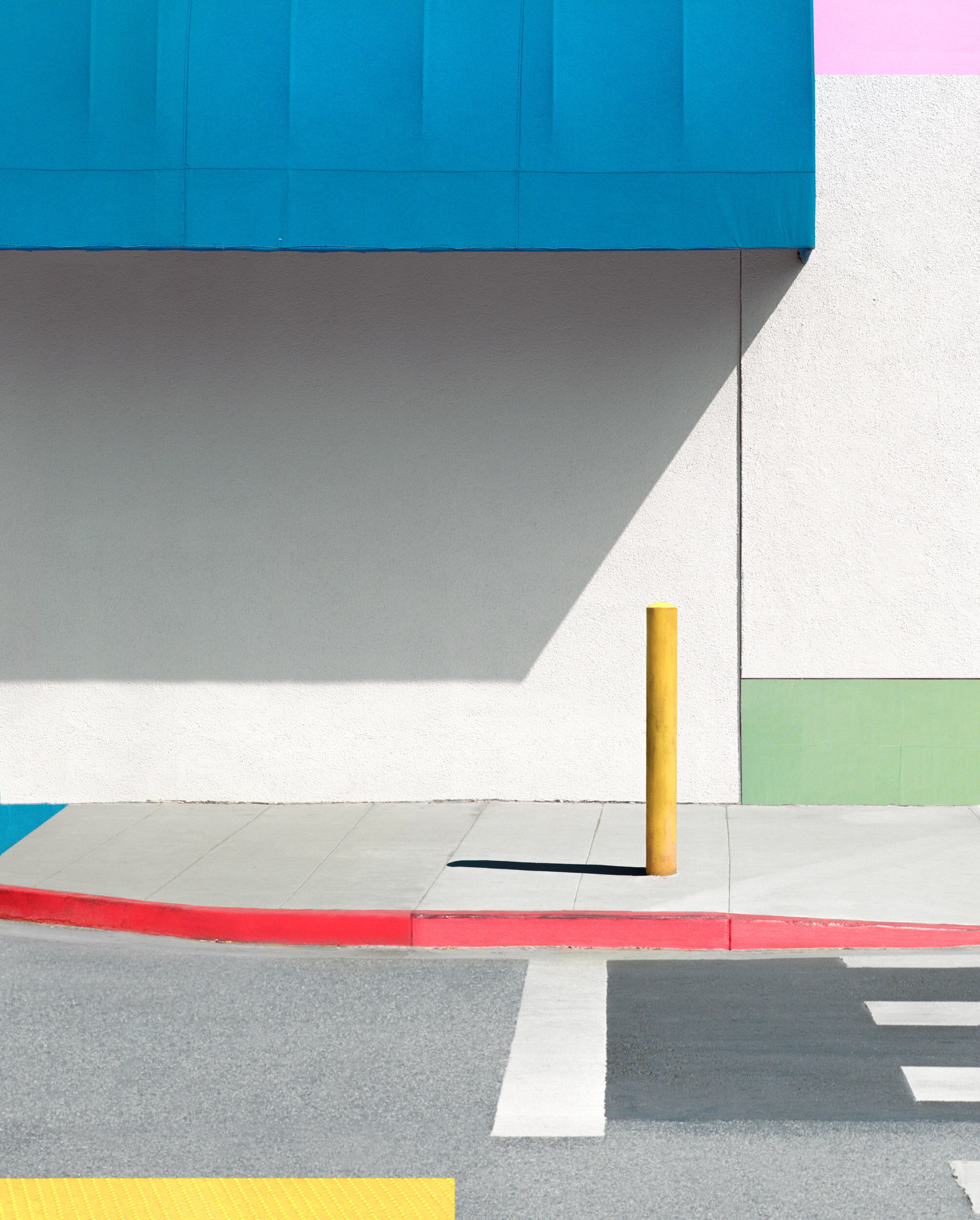Moving to Los Angeles was a big part of the process of finding my voice as a photographic artist. I had an immediate and visceral reaction to the landscape, the light, and the city’s run-down 80s architecture. It served as a driving force behind the evolution of my work, and my passion for working hard at it. I grew up in the Balmain area of Sydney, where—at the time—there were a lot of old factories and unused industrial spaces. I remember wandering around with my camera, taking pictures of the old machinery, and empty spaces. I found it all strangely beautiful. These instincts are very much alive in the work I do in Los Angeles.
BLUE AWNING with YELLOW 2017
In general, I think, LA is not a very well-understood city—and with good reason. It is so vast and it lacks a simple visual theme or icon that ties it all together such as the Eiffel Tower in Paris, or the Opera House in Sydney. For Gavin Lambert, “Los Angeles is not a city but a bunch of suburban approaches to a city that never materializes..”. LA is more of a collection of smaller cities that don’t necessarily have anything to do with each other, all stitched together by giant freeways, and—almost for convenience—labelled as Los Angeles. However, from my perspective, the visual framework of the city is idiosyncratic, with fantastical juxtapositions of compelling elements: nature and concrete, geometric details and poetic abstractions, soft pastels and clean lines. There is a serene beauty here, but also a quiet desperation and emptiness, all of it gets crammed into the pictures I take.
02 CORNER COMPOSITION, PALM SPRINGS 2017
I’ve come to realize that I have an innate fascination, and respect for things that are basic and functional. Hence, I tend to gravitate towards unpretentious public spaces. I see beauty in the simple things, in the ordinary, in inornate surfaces. My photographic work is about portraying the everyday urban spaces in a way that re-contextualises or recasts them for the viewer.
It is deeply interesting for me to analyse public spaces that one tends to ignore, to try to see them clearly, and frame them in a way that can affect or challenge the viewer's perceptions about their surroundings. When I’m out shooting, what I usually see first is the seed of something interesting, for example, perhaps an intersection of light or colour. Sometimes, I’ll take a look and find that there is nothing worth shooting, and other times I’ll take three rolls of film; this process of trial and error constitutes an inexact science. The composition is a mysterious process, there are many theories regarding what works, and why—but I don’t know if I believe any of it. For me, it’s about feeling something, which makes the process an intuitive one.
Explore more of George Byrne’s photographs at http://www.georgebyrne.com/
Visit his instagram handle for a glimpse into the sublime side of LA: @george_byrne
Enquire about purchasing George Byrne's work please contact Olsen Gruin Gallery at info@olsengruin.com.
ASTMAG
A series of interviews and articles from & about global creatives. Also an attempt to form a community of awe-inspiring artists, designers, photographers, film-makers & writers.
To be featured, write to us at hello@astmag.com



